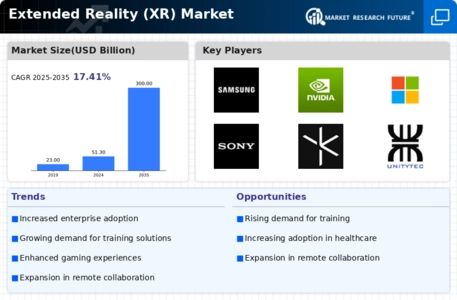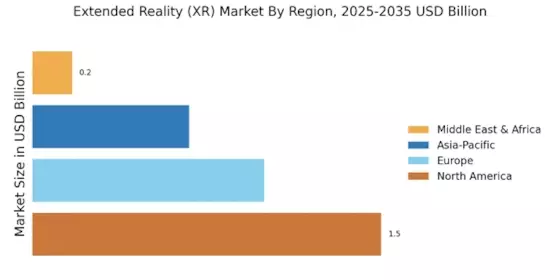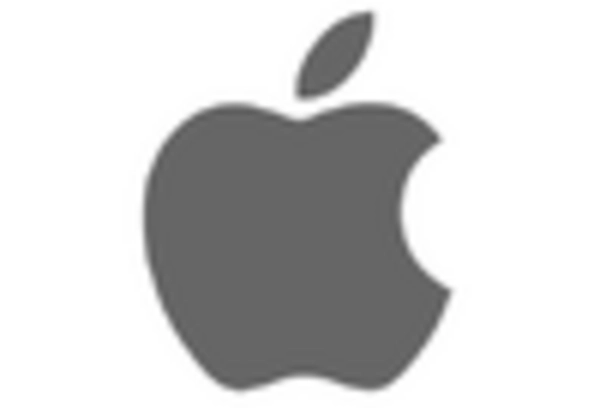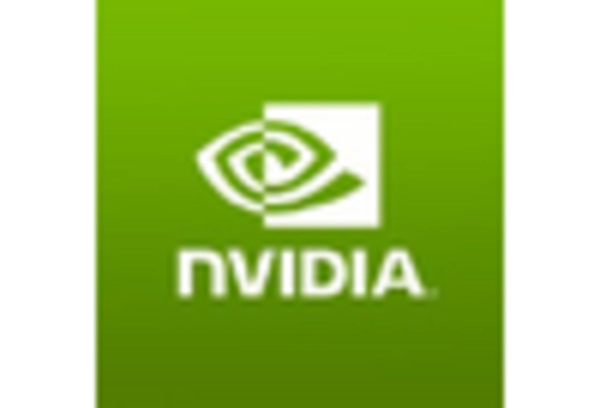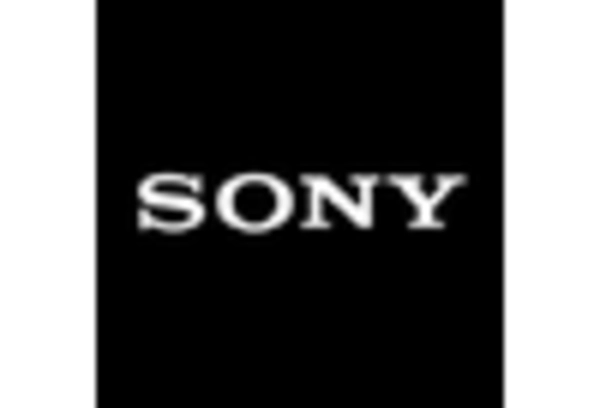Growing Investment in XR Startups
Investment in startups focused on Extended Reality (XR) technologies is on the rise, indicating a robust interest in the potential of this market. Venture capital funding for XR companies has seen substantial growth, with billions of dollars allocated to innovative projects that aim to revolutionize various industries. This influx of capital is fostering the development of new applications and solutions, particularly in sectors such as real estate, retail, and training. As these startups bring fresh ideas and technologies to the forefront, the Extended Reality (XR) Market is likely to experience accelerated growth, driven by the creativity and innovation of emerging players.
Advancements in Hardware Technology
Technological advancements in hardware are significantly influencing the Extended Reality (XR) Market. The development of more powerful and affordable devices, such as VR headsets and AR glasses, is making XR experiences more accessible to a broader audience. For instance, the introduction of standalone VR headsets has eliminated the need for high-end PCs, thus lowering the entry barrier for consumers. Additionally, improvements in display technology, such as higher resolution and refresh rates, enhance the overall user experience. As hardware continues to evolve, the Extended Reality (XR) Market is expected to benefit from increased adoption rates, as consumers and businesses alike seek to leverage these advancements for training, entertainment, and other applications.
Increased Focus on Remote Collaboration
The shift towards remote work has led to an increased focus on collaboration tools that utilize Extended Reality (XR) technologies. Businesses are increasingly adopting XR solutions to facilitate virtual meetings, training sessions, and collaborative projects, thereby enhancing productivity and engagement among remote teams. The Extended Reality (XR) Market is responding to this demand by offering platforms that allow for immersive interactions, making remote collaboration more effective. As organizations continue to embrace hybrid work models, the need for XR-based collaboration tools is expected to grow, further propelling the market forward.
Rising Demand for Immersive Experiences
The Extended Reality (XR) Market is witnessing a notable surge in demand for immersive experiences across various sectors. This trend is particularly evident in entertainment, where consumers increasingly seek engaging content that transcends traditional media. The gaming industry, for instance, is projected to reach a valuation of over 200 billion dollars by 2025, with XR technologies playing a pivotal role in enhancing user engagement. Furthermore, the rise of virtual reality (VR) and augmented reality (AR) applications in live events and theme parks indicates a shift towards experiential entertainment. As consumers become more accustomed to these technologies, the Extended Reality (XR) Market is likely to expand, driven by the need for innovative and captivating experiences.
Expansion of XR in Retail and E-commerce
The retail and e-commerce sectors are increasingly integrating Extended Reality (XR) technologies to enhance customer experiences and drive sales. Retailers are utilizing AR applications to allow customers to visualize products in their own environments before making a purchase, thereby reducing return rates and increasing customer satisfaction. According to recent studies, retailers that implement XR solutions report higher conversion rates and improved customer engagement. As the competition in the retail space intensifies, the Extended Reality (XR) Market is likely to see further expansion, as businesses seek to leverage these technologies to differentiate themselves and attract consumers.

